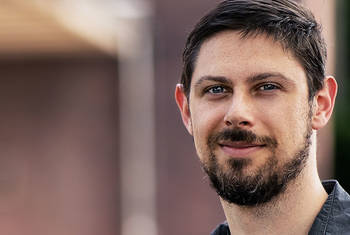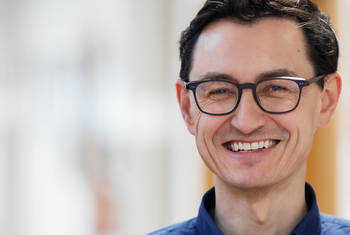Liam Huber How Do Alloying Elements Behave at the Grain Boundary?
Liam Huber is Group Leader for Thermodynamics and Kinetics of Defects at the Max-Planck-Institut für Eisenforschung in Düsseldorf. Huber has been working in the Computational Materials Department at the Max-Planck-Institut since 2015. Prior to this, he completed his Masters and PhD in Physics at the University of British Columbia. Huber’s research focuses on solute defect interactions, computational methods for long timescale problems, machine learning in materials science and pyiron development. An expert on the computing language Python, Huber received awards from the Canadian NSERC for both his doctoral and masters research projects.
Area of Research
Material Science
since 2020
Research Group Leader
Max-Planck-Institut für Eisenforschung (more details)
Thermodynamics and Kinetics of Defects Group
since 2020
Principle Investigator
SFB 1394: Structural and chemical atomic complexity
2015-2019
Post-doctoral researcher
Max-Planck-Institut für Eisenforschung (more details)
2009-2015
Ph.D.
University of British Columbia, Canada
2005-2009
BSc. Phys. Hons.
University of the Fraser Valley, Canada
Fellowships
- Natural Sciences and Engineering Research Council of Canada (NSERC) Alexander Graham Bell Canada Graduate Scholarshop - Doctoral (2013)


Max-Planck-Institut für Eisenforschung
DüsseldorfNovel alloys for automotive lightweight design and airplane turbines, materials for sustainable energy conversion and storage, and the development of big data and machine learning methods – these are just a few examples of the research areas that are being investigated by the scientists of the Max-Planck-Institut für Eisenforschung. The team of engineers, material scientists, physicists, and chemists develops tailored materials and methods for mobility, energy, infrastructure, and information. To this end, the researchers study complex materials with atomic precision under real environmental conditions.
Map
On an atomic scale, the area of a material in which different crystalline structures come together is known as a grain boundary. In this video, LIAM HUBER investigates the behavior of alloying elements at grain boundaries. Identifying impracticalities in quantum mechanical simulation, Huber uses classical simulation to study how atoms behave at the grain boundary and how this influences the properties of that grain boundary. Huber also employs machine learning to make predictions and to extend the insights provided by the study. Going forward the research will seek to further explain the influence of a range of variations including, most significantly, temperature.
LT Video Publication DOI: https://doi.org/10.21036/LTPUB10936
A Machine Learning Approach to Model Solute Grain Boundary Segregation
- Liam Huber, Raheleh Hadian, Blazej Grabowski and Jörg Neugebauer
- npj Computational Materials
- Published in 2018









